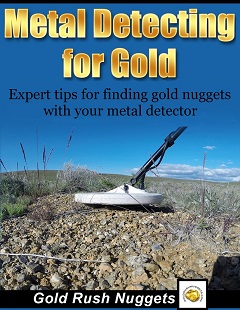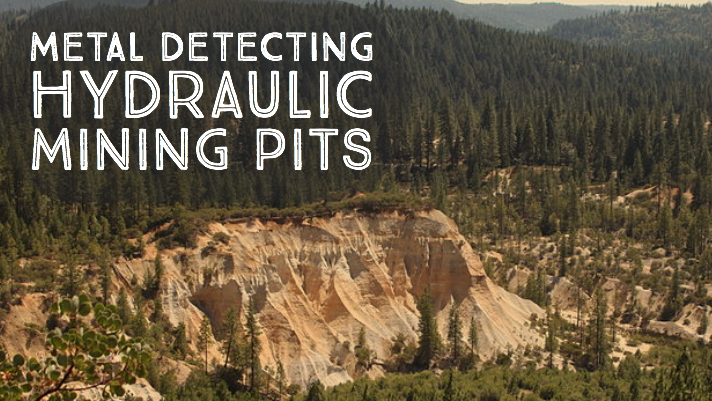
Metal detecting have always been an efficient way to recover gold nuggets, assuming that the operator has the experience needed to use it properly. Many of the newer detectors on the market are quite good at discriminating out ferrous trash, allowing a prospector to focus on the better nonferrous targets (gold & lead).
In gold country, some of the best places known to have huge potential for gold nuggets are the old hydraulic pits. However, there are tips one ought to know about, before taking a step into that direction. Let’s examine what hunting a hydraulic pits entail, and some basic tips associated with gold mining in such locations for one to have good results.
What are Hydraulic Mine Pits?
First and foremost, hydraulic pits are simply the pits left behind by the miners during the time hydraulic mining was undertaken many years back. The miners used hydraulic pressure by routing water through a large water cannon called a monitor. This created a huge high-pressure spray that allowed men to wash away overburden and release gold.
These old mines found a lot of gold, but they also left a lot of gold behind too. They were focused on high volume, and as such they easily missed some nuggets that were wedged in the bedrock. Many of these mines were huge, covering hundreds of acres. There were some spots that were missed or not washed efficiently. This all resulted in gold being left behind.
In order to obtain the best results from the pits left behind by hydraulic mining, the following tips should be considered for best results.
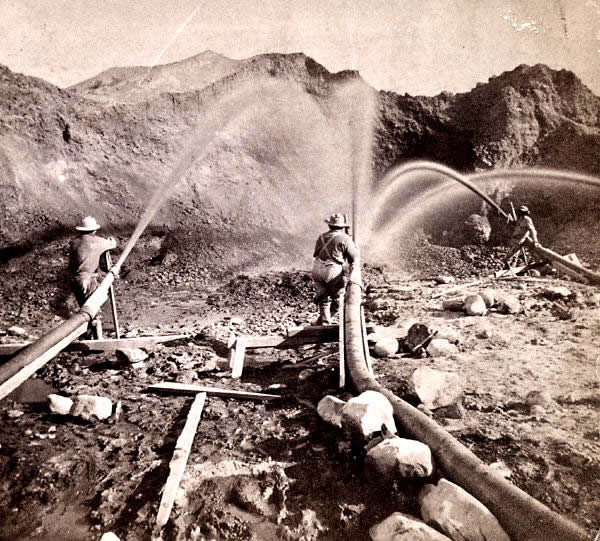
Evaluate the Mining Site
When I am metal detecting at a hydraulic pit, I like to evaluate the area and try to analyze how the mine was set up. This can be achieved when the ground is carefully scrutinised. If you notice small plateaus on the ground that were not washed away, these are likely the locations were the monitors were set up.
Once you’ve got an idea of where the monitors were set up, you can more easily locate the places that were not washed very well. In an instance where one is able to find the position the water cannons were located, it becomes easier to perceive the area most likely to have been affected or not by the washing of water. If the water pressure was lower in a certain area, it would likely struggle to move larger piece of gold.
Big Flat Rocks are a Good Indicator
As a prospector, I always look out for heavy and flat rocks. In most cases, there appears to be piles of flat or even darker rocks around the hydraulic pits. Some were left behind because the water was not strong enough to hit and move them since they didn’t roll like a round rock. Dark, shiny rocks are also good to look for. These are usually denser and heavier. The gold will often be in the same area.
Working a metal detector around the flat and heavy rocks in a hydraulic pit can be effective. If you are ambitious you could also move some of those rocks and might find some gold underneath them.
Sluice Box Locations
It is also good if you can find the locations that the sluice boxes were set up. Somewhere at the bottom of a hydraulic pit those old-timers would have set up a sluice. Sometimes they were cut into the ground and an obvious trench is still evident. These sluice locations sometimes have gold that was missed. Sometimes gold would get caught underneath of the sluice. Sometimes it was lost when the miners did their cleanups.
Other times the boxes was not very efficient, especially when the riffles were overloaded. Those hydraulic monitors were moving loads of material, and it could easily overwhelm the homemade riffles of an old wooden sluice. As a result, as the washing was done, chances are that some gold was lost in the process. When careful examinations are conducted in these locations, there are high possibilities of recovering some gold using your metal detector.
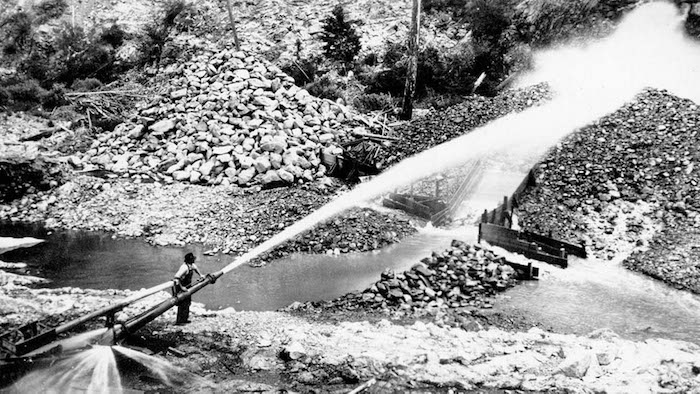
Bedrock that Wasn’t Thoroughly Rinsed
Potential prospectors should be able to examine the exposed bedrocks that have not been thoroughly attended to. Whenever miners were doing their job, they wanted to wash the materials suspected to have gold down to the bedrock to have them washed and cleaned thoroughly. But that process was not always so. For this reason, checking out those areas located on far edges of the pit is likely to bring some positive results.
I encourage you to locate jagged bedrock. Such rocks may have trapped some gold nuggets, in areas where the water pressure may have been minimal. Hence, the same water could have facilitated the movement and settling of the gold nuggets into the cracks. So, such could be good places to search with a metal detector.
Be sure to take your time. Detecting bedrock should be done slowly and methodically in order to cover it thoroughly.
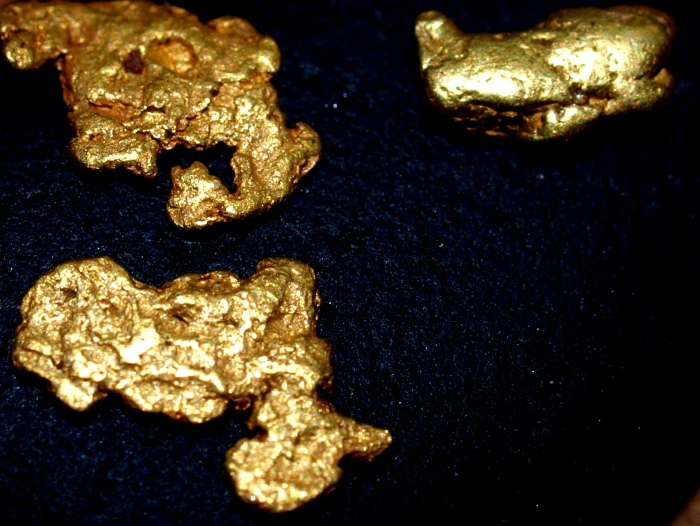
Heavy Clays and Iron Trashed Areas
Gold can also be recovered when close examination is conducted on the clay in the hydraulic pits. It is a well-known fact that clay poses a challenge on miners when it comes to gold recovery. If the high pressured water was not strong enough to thoroughly bust up clays, then gold nuggets could easily be missed and they are still waiting to be found.
Use a VLF metal detector and work those trashy locations as well. A number of hydraulic pits will have a lot of trash, and it is in that same trash that when a metal with quality discrimination ability is used to search properly and patiently. There are many good detectors that will work for this task, but I am quite fond of the Fisher Gold Bug Pro.
Hydraulic Pits of All Sizes
Lastly, it would also be ideal for prospectors to locate small as well as big hydraulic pits. These mining sites varied in sizes. Some of the ones in the California Mother Lode were absolutely huge, and you could probably detect the same pit for years and years and never cover it all. However don’t forget that some pits were rather small, and today they can be overgrown with brush and almost unrecognizable. Keep your eyes open for smaller pits as these can be a real bonanza if no one has hunted them yet!
Next: Metal Detect the “Fringe” Spots to Find More Gold Nuggets

